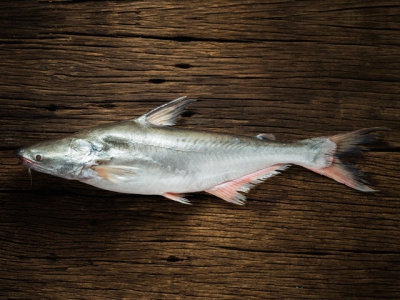Vietnam boosting pangasius exports to China as sales to US tumble

Vietnam’s pangasius exporters are focusing more on Chinese market as their sales to the United States continue to spiral downward.
In August, Vietnam exported pangasius worth USD 69.8 million (EUR 63.9 million) to China (including Hong Kong), a jump of 63.4 percent year-on-year and accounting for 40.6 percent of the country’s total pangasius export value in the month, according to the latest data from Vietnam Association of Seafood Exporters and Producers (VASEP).In the first eight months, the export value gained from China was USD 389.8 million (EUR 356.6 million), up 17.2 percent from the same period last year.
“China is the major focus of many Vietnamese pangasius exporters at the moment,” VASEP said in a statement.
Leading exporter Nam Viet Joint Stock Company, or Navico, said China was its biggest buyer of pangasius in the first eight months. Navico’s export value from China in the period rose 82.2 percent to USD 30.5 million (EUR 27.9 million), accounting for 32.8 percent of its total export value of USD 93.1 million (EUR 85.2 million).
China is a giant market and pangasius has become a favorite there, Navico’s vice chairman Nguyen Duy Nhut told a seminar in Hanoi on Wednesday, 25 September. He said Navico is selling pangasius to Shanghai and is on track to expand sales to other cities soon.
“Last month and this month we did not have enough pangasius to sell to China. But we are expected to increase supply for them in the fourth quarter,” Nhut said.
Currently I.D.I, Vinh Hoan and Navico are three major suppliers of pangasius in China. Nhut said the Chinese market is so large that Vietnamese pangasius exporters do not need to compete against each other to increase their market share there.
Overall, however, in the first eight months of 2019, the total value of Vietnam’s pangasius exports has plunged 7.7 percent from the same period in 2018, falling to USD 1.3 billion (EUR 1.19 billion). The drop is mainly due to lower sales in the U.S., according to VASEP. Exports to the U.S. decreased 41.5 percent to USD 187.9 million (EUR 171.9 million) between January and August, VASEP said.
Vietnam’s export value of pangasius actually rose on year-on-year basis in January and February 2019, and only began falling in March. August was the sixth month in a row that Vietnam saw its overall value from exports decline, data from Navico showed, with the country exporting pangasius worth USD 171.6 million (EUR 157 million) in August, down 18.4 percent from the same month a year prior.
The drop has been a surprise to VASEP and Vietnam’s pangasius producers, who were widely expected to gain market share in the U.S. as tilapia from China encountered rising tariffs due to the Sino-U.S. trade war.
According to VASEP, Vietnam’s pangasius sector has been severely affected by various commercial and technical barriers created by the U.S. But Pham Thi To Tam, an analyst from local Rong Viet Securities said at the seminar that Chinese companies flooded the U.S. market with their products in advance of higher tariff rates coming into effect in January, March, and May this year. The increased shipments from China led to high stockpiles of seafood in the U.S., which discouraged U.S. importers buying more pangasius, Tam said.
“The lower sales [totals] to the U.S. in the first eight months of this year were also attributed to lower demand in the U.S. and falling pangasius prices,” Tam said. Prices were very high in 2017 and 2018 due to high demand from China and shortage of pangasius material then, she added.
Tam forecasted Vietnam’s pangasius exports in the second half of this year will be better than in the first half, won’t that the country will fail to attain last year’s totals.
VASEP said it expects sales will continue to decrease in what’s left of 2019, but that it expects demand to rise so that the declining trend in sales will level off by the end of the year.
Related news
 The farm that aims to monitor every individual salmon
The farm that aims to monitor every individual salmon The development of iFarm is a unique opportunity for suppliers of equipment to take part in an exciting and high-tech development project in Norway.
 Bangladeshi shrimp farmers shift to crab aquaculture to avoid losses
Bangladeshi shrimp farmers shift to crab aquaculture to avoid losses Farmers in Khulna region in the southwestern part of Bangladesh have turned to raising crab, following repeated losses in shrimp farming
 Walmart uses blockchain to track Indian shrimp exports to US
Walmart uses blockchain to track Indian shrimp exports to US The pilot project is the first known use of blockchain to track shrimp exports from the farmer to an overseas retailer.